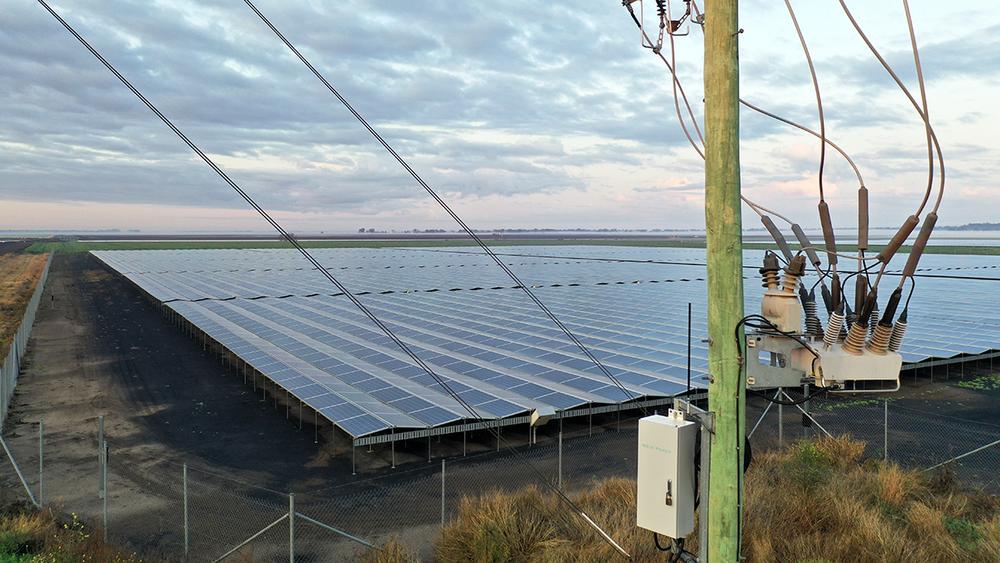Technical Article
Published 11/2023
Remote Control Options for the OSM Recloser System

Remote control for reclosers makes sense. Reclosers are designed to interrupt faults and improve line reliability, by reclosing on momentary faults and interrupting serious faults.
However, without remote control, serious outages will only be discovered when utility engineers patrol the line, or when the public makes a complaint to the utility.
Fortunately, most modern recloser systems have options for remote control. In this article, we share some of the methods for remote control of the OSM Recloser system with RC series control. All of these methods are applicable to all current NOJA Power RC controls, including the RC-02, RC-03, RC-10, RC-15 and RC-20.
Physical Communications vs Communications Protocol
When talking about communications and remote control, it’s important to be clear between the physical communications medium and the communications protocol used to talk through that medium.
For the OSM Recloser, examples of Physical communications are devices such as third party radios, fibre optic modems, or cellular modems. These devices are installed as accessories into the controller, and provide the physical method of communication. For the RC-15 and RC-20, operators can use the built-in 4G or WiFi communications features as the physical “layer”.
However, a communications link also needs a protocol. Communications protocols are the documented sequence of signals that are sent and received through the physical port. Outside of the power systems industry, we are most familiar with internet protocols, such as IP and TCP (Transport Control Protocol), but these are a small subset of many communications protocols that are in use today.
SCADA vs Non-SCADA Remote Control
When discussing communications with capital equipment, the term SCADA is often used. SCADA is an acronym for Supervisory Control and Data Acquisition.
SCADA predates many of the internet protocols, and was originally designed for controlling industrial processes. Today, many SCADA protocols can be merged with Internet protocols so that engineers can make the most of internet hardware, examples including IEC 60870-5-104, an IEC protocol standard for SCADA over IP.
There are also non-SCADA remote control options in the NOJA Power OSM Recloser system. These are referred to as “engineering access”, where engineers can remotely connect to devices to update settings or retrieve log files. This feature is disabled by default for security reasons, but when used on a secure network it offers operational cost savings by reducing service trips to site.
Options for SCADA Protocols in NOJA Power’s OSM Recloser System
DNP3
Distributed Network Protocol Version 3, or DNP3, is one of the two most common methods for communicating with the NOJA Power OSM Recloser. DNP3 can be used over Serial or IP based physical communications. DNP3 is commonly used in Australia, Asia and North American networks.
IEC 60870-5-101/104
Colloquially termed “101” or “104”, for Serial and IP based communications respectively, this European standard protocol is common throughout continental Europe and South America.
IEC 61850 MMS and GOOSE
A more modern protocol, 61850 provides far more detail than DNP3 or 60870 in communications packets. IEC 61850 MMS (or Manufacturer Messaging Specification) is a “self-describing” protocol, where messages have some context. While a DNP3 message may effectively say “point number 3 is 0”, a 61850 message would say “The circuit breaker named x has changed it’s position to lockout”. IEC 61850 MMS requires far more data, but its messages are more detailed and provide better context in a complex network environment.
IEC 61850 GOOSE is a form of high speed signal used for interlocks and substation automation. GOOSE stands for Generic Object Orientated Substation Event. GOOSE can be used in combination with other SCADA protocols in the OSM Recloser, allowing local automation with other devices, along with remote monitoring and control.
Modbus
Modbus is a legacy protocol that has largely been phased out in electricity distribution networks, but it is still used in mining and capital infrastructure. It is a simple protocol that does not offer any inherent security, as it runs on the assumption of secure networks. However, it is available for use in NOJA Power RC series controls, so that the OSM Recloser can be integrated into older systems in mining or private infrastructure.
“80% of faults on overhead distribution networks worldwide can be cured by simply opening and closing the recloser to clear transient faults,” says Neil O'Sullivan, NOJA Power’s Group Managing Director.
“Remote control can help our utility customers restore supply in the remaining 10% of cases where a permanent fault has occurred by switching the network to isolate the fault to the smallest possible area and where ring networks are deployed the utilities can often back feed around faults to restore the majority of supply in most cases in less than a minute using automation systems.”
Conclusion
While this list of protocols is not collectively exhaustive, we have explored some of the common methods for SCADA control of the NOJA Power OSM Recloser. If you have a project in mind, or need advice on SCADA integration of your NOJA Power OSM Recloser, contact your local NOJA Power distributor or visit www.nojapower.com
Want to stay up to date with Electrical Distribution Technology?
Join our list for a free weekly technical bulletin, as we share our Global Electrical Engineering experience directly to your inbox.
Subscribe →